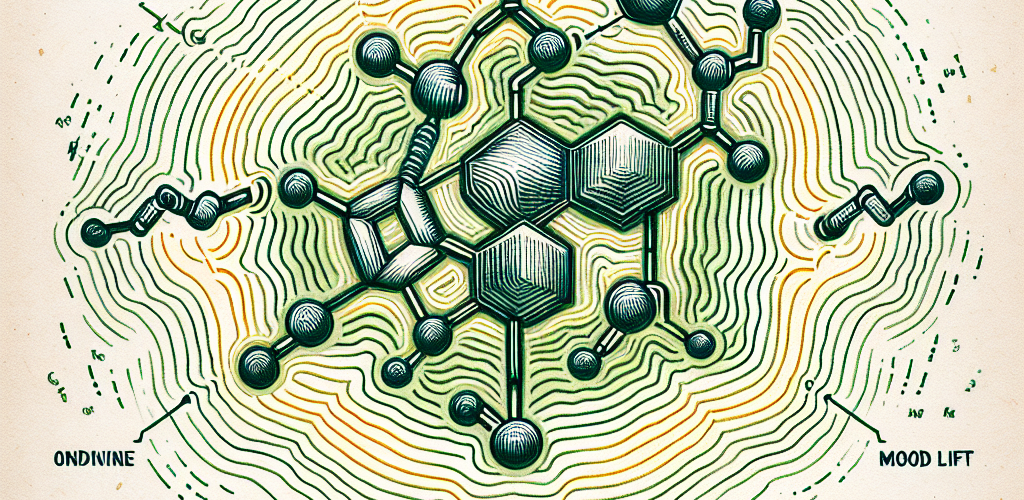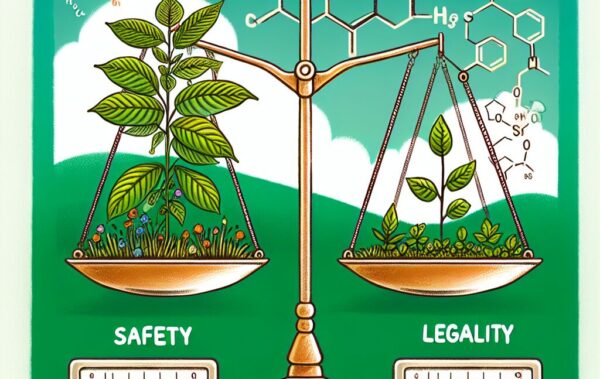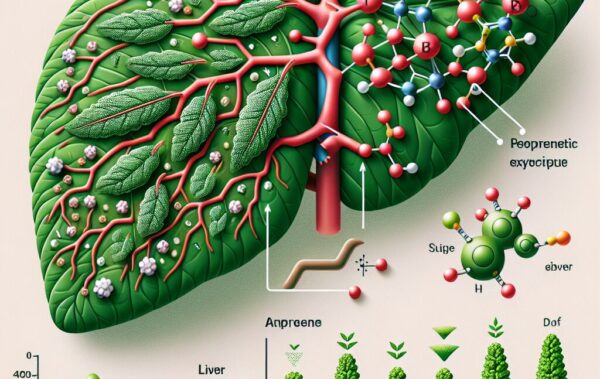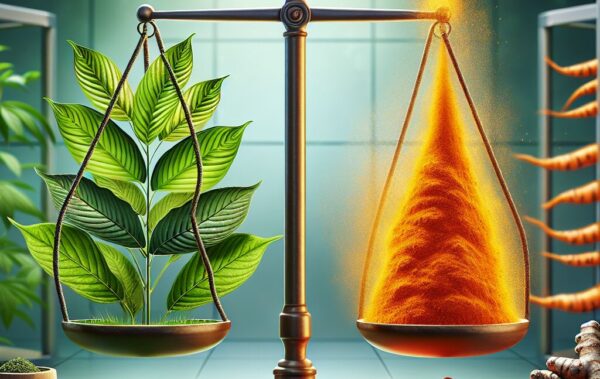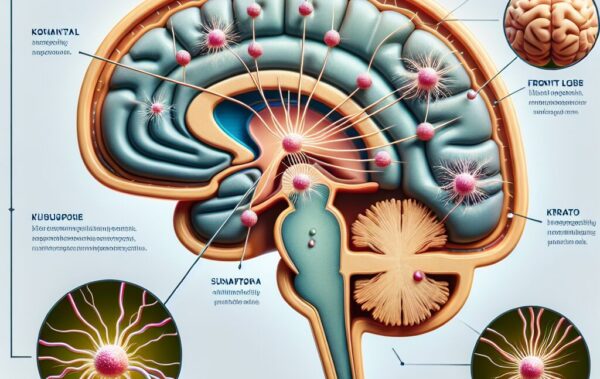- Chemical composition of kratom
- Pharmacology of 7-hydroxymitragynine
- Therapeutic potential of 7-hydroxymitragynine
- Adverse effects and safety concerns
- Frequently Asked Questions (FAQ) about 7-hydroxymitragynine
Kratom, also known by its scientific name Mitragyna speciosa, is a tropical tree indigenous to Southeast Asia. It has notably piqued the interest of both the scientific community and the general public, primarily due to its peculiar chemical composition. What might appear on the surface as mere foliage is, in fact, a complex constellation of compounds, among which stands out 7-hydroxymitragynine, known for its significant effects within the plant’s alkaloid profile.
Kratom’s leaves contain a multitude of alkaloids, which are nitrogen-containing compounds with a notable influence on human physiology and psychology. The number of alkaloids found in kratom is substantial, with over 40 different types identified, each with unique properties. However, the two primary alkaloids that have drawn the most attention are mitragynine and 7-hydroxymitragynine. The latter, despite its lower concentration in kratom leaves compared to mitragynine, exhibits a potency that far surpasses that of its more abundant counterpart.
It’s important to note that the concentration of these alkaloids can vary significantly depending on a range of factors, including the age of the plant, the region in which it is grown, and the time of year the leaves are harvested. These variables contribute to the unique profile of each kratom strain, and ultimately, the effects they produce when consumed.
For those new to kratom or considering its use, these chemical intricacies might seem daunting. Yet understanding the nature of 7-hydroxymitragynine and its role within the chemical symphony of kratom is crucial. The consumers looking to harness the plant’s properties can better navigate the breadth of options available, such as different strains ranging from the energizing Maeng Da, to the more sedative Red Vein varieties.
In conclusion, while 7-hydroxymitragynine is not the sole alkaloid present within kratom, it is certainly one of the most influential in terms of its effects. The profound potency of this singular compound contributes deeply to kratom’s overall impact and helps to explain why this plant has become a subject of substantial interest and controversy in the realms of both healthcare and regulatory discussions.
Pharmacology of 7-hydroxymitragynine
Delving into the pharmacology of 7-hydroxymitragynine reveals a captivating aspect of kratom’s influence on the human body. This alkaloid interacts primarily with the opioid receptors in the brain, which are responsible for a host of physiological responses. Unlike traditional opioids, 7-hydroxymitragynine exhibits selective binding, meaning it shows a preference for specific receptor types – mainly mu and kappa opioid receptors. This specificity contributes to its unique effect profile and distinguishes it from classical opioids, which are known for their broader and often more dangerous effects.
The pharmacokinetic properties of 7-hydroxymitragynine are also noteworthy. The alkaloid is metabolized in the liver and has a relatively fast onset and moderate duration of effects which can vary among individuals. Importantly, this compound does not just affect pain perception; it also impacts neurotransmitter release in the brain, thereby modulating mood, providing anxiolytic benefits, and potentially producing a sensation of euphoria.
Here are some critical focal points relating to the pharmacology of 7-hydroxymitragynine:
- Binding affinity: Studies indicate that 7-hydroxymitragynine has a high affinity for mu-opioid receptors, where it acts as a partial agonist. This is foundational to its analgesic properties.
- Analgesic effects: Its pain-relieving properties are one of the most sought-after effects by users, making kratom, particularly strains enriched in 7-hydroxymitragynine, a popular choice for those seeking natural alternatives to traditional painkillers.
- Mood enhancement: By influencing the release of neurotransmitters, 7-hydroxymitragynine may help uplift mood and has been used by some for its antidepressant-like effects.
Taking these points further, the pharmacological implications of 7-hydroxymitragynine are vast and multifaceted. For example, its analgesic potency has been a topic of considerable interest within scientific circles. Estimates suggest that, on a molecular level, this compound may exert an effective analgesic activity that rivals or exceeds some known opioids, albeit with a potentially lower risk for respiratory depression, one of the most serious side effects associated with opioid use.
Additional research has suggested that 7-hydroxymitragynine also exhibits synergy with mitragynine, the other primary alkaloid present in kratom. This synergistic relationship may enhance the overall effects of kratom, including pain relief and mood enhancement, without proportionally increasing the risk profile.
| Effect | Mechanism |
|---|---|
| Analgesia | Partial agonist activity at mu-opioid receptors |
| Mood Regulation | Influence on neurotransmitter release |
| Euphoria | Increased dopamine release |
In combining these points, we see that the potency of 7-hydroxymitragynine lies not only in its biochemical actions but also in the breadth of effects it has on users. Its efficacy in pain management, potential mood-boosting properties, and relatively lower risk of dangerous side effects position it as a compound of interest for those seeking alternative therapeutic modalities. Of course, while the therapeutic benefits of kratom and 7-hydroxymitragynine show promise, they come with their own risks and safety concerns, a subject that will be explored further on.
Therapeutic potential of 7-hydroxymitragynine
Kratom has caught the attention of the medical community for its potential therapeutic applications, much of which can be attributed to the compound 7-hydroxymitragynine. This powerful alkaloid, despite being present in lower amounts than mitragynine, is recognized for its potent effects and the substantial impact it has on kratom’s overall efficacy. The potential therapeutic benefits of 7-hydroxymitragynine are diverse and are currently under investigation, opening the door to a range of possible uses for this natural substance.
Among the properties of 7-hydroxymitragynine that hold therapeutic value are its analgesic effects, which are particularly compelling. This attribute makes certain kratom strains rich in this alkaloid a subject of interest for individuals seeking relief from various forms of pain. For instance, Red Vein kratom powders, known for higher concentrations of 7-hydroxymitragynine, are commonly chosen by those with chronic pain conditions, hoping to find respite without the side effects associated with prescription painkillers.
The mood-regulating capabilities of this compound are another noteworthy aspect of its potential therapeutic applications. Individuals suffering from mood disorders may turn to kratom as a natural alternative for mood management and even as an adjunct to conventional treatments. The effects of 7-hydroxymitragynine on neurotransmitter systems could have implications for the development of new antidepressants and anxiolytics.
Let’s now delve into some of the key therapeutic prospects associated with 7-hydroxymitragynine:
- Natural pain management: As an opioid receptor agonist, the analgesic properties of 7-hydroxymitragynine offer a natural alternative for pain relief, potentially without the risk of dependency that accompanies many synthetic opioids.
- Anxiety and depression amelioration: The influence on neurotransmitter release might provide benefits for those with anxiety or depressive disorders, acting as a complementary treatment for emotional well-being.
- Opioid Withdrawal Aid: 7-hydroxymitragynine might help alleviate withdrawal symptoms in individuals attempting to overcome opioid dependency, providing a more manageable pathway to recovery.
However, it’s critical to approach these therapeutic potentialities with caution and empirical scrutiny. Despite anecdotal reports and preliminary studies suggesting the wellness benefits of 7-hydroxymitragynine, the substance has yet to be approved by major health regulatory bodies such as the FDA for medical use. Furthermore, it’s essential to consider the correct dosage and the form in which kratom is consumed, whether as traditional leaves, in powdered form, or within capsules, as these variables can influence the effects experienced by the user.
| Potential Use | Notes on Effectiveness |
|---|---|
| Pain Relief | Evidence suggests potent analgesic properties associated with opioid receptor interaction. |
| Anxiety and Mood | Anecdotal and preliminary studies indicate possible anxiolytic and mood-regulating effects. |
| Opioid Dependency | May serve as an adjunct remedy in alleviating opioid withdrawal symptoms. |
In conclusion, the therapeutic potential of 7-hydroxymitragynine within kratom might offer a glimmer of hope for many looking for natural remedies. As we move forward, it is crucial to blend traditional knowledge with modern research to unlock the true potency of this remarkable compound fully. The information provided herein highlights just a segment of the potential applications of 7-hydroxymitragynine, and continuing research will undoubtedly unfold more layers of its therapeutic value.
Adverse effects and safety concerns
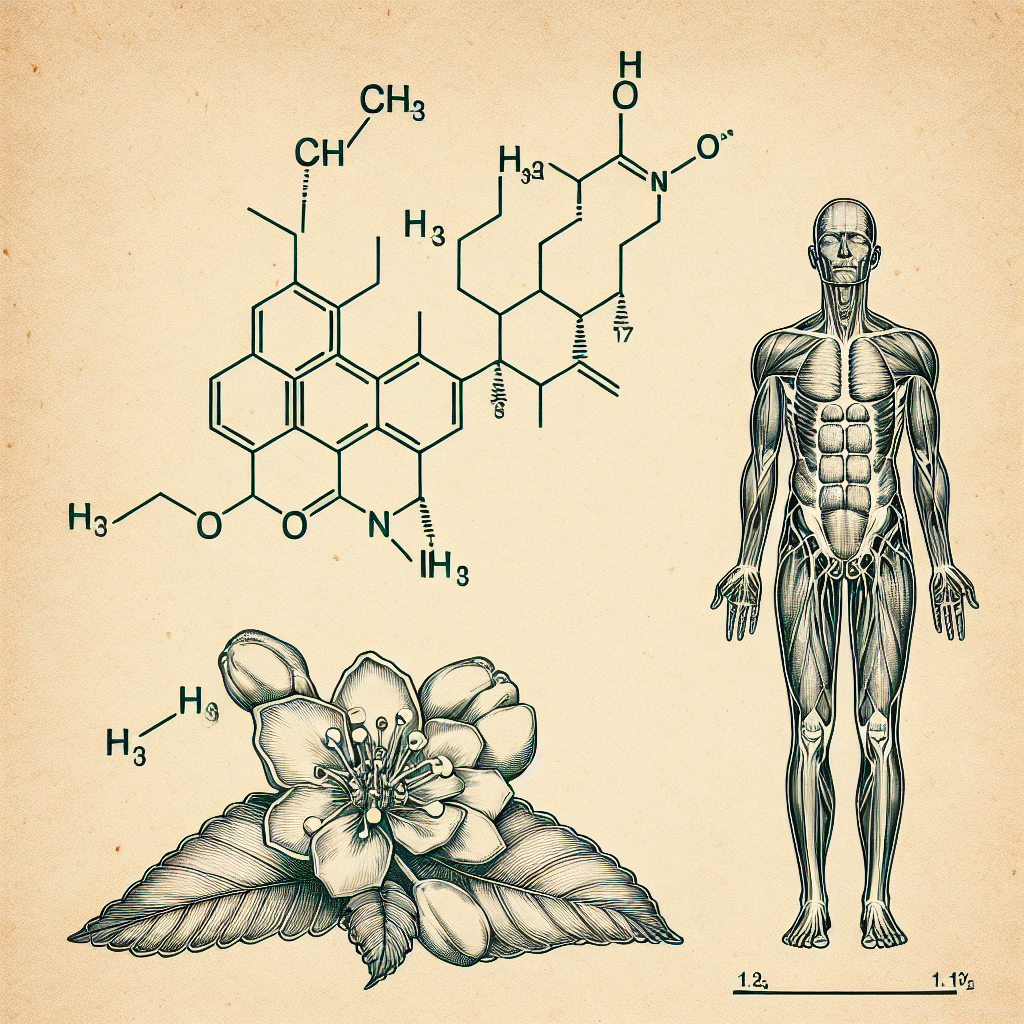 While the therapeutic prospects of 7-hydroxymitragynine are intriguing, it is equally important to address the potential adverse effects and safety concerns associated with its use. As with any substance that influences physiological processes, there are inherent risks that must be acknowledged and managed.
While the therapeutic prospects of 7-hydroxymitragynine are intriguing, it is equally important to address the potential adverse effects and safety concerns associated with its use. As with any substance that influences physiological processes, there are inherent risks that must be acknowledged and managed.
The potency of 7-hydroxymitragynine as an active compound in kratom can lead to various side effects, particularly when taken in large doses or used irresponsibly. Users have reported experiencing symptoms such as nausea, constipation, sleep issues, and a loss of appetite. Additionally, due to its interaction with opioid receptors, there is a potential for dependence and addiction, mirroring some of the challenges faced with traditional opioid medications.
One of the primary safety concerns revolves around the lack of regulatory oversight in the kratom market. Without standardization, it is difficult for consumers to be certain of the purity and concentration of 7-hydroxymitragynine in purchased kratom products. This uncertainty raises the risk of unintentional overconsumption and exposure to contaminants.
Moreover, because kratom’s effects are still under study, there is limited data on how it interacts with other medications and conditions. It is crucial for users to consult healthcare professionals before integrating kratom into their regimen, especially if they are currently on medication or have underlying health issues.
It is also important for users and practitioners to be aware of the signs of kratom overdose, which can include severe sedation, decreased breathing, and loss of consciousness. While kratom is often cited for its lower risk of respiratory depression compared to classical opioids, excessive intake, particularly of potent extracts, still poses significant dangers.
Let us consider some of the safety measures that can be taken to mitigate the risks associated with 7-hydroxymitragynine in kratom:
- Education: Understanding correct dosages, different strains, and their effects can help users make informed decisions.
- Quality Control: Purchasing kratom from reputable sources that provide clear information about their products can reduce the risk of consuming contaminated or overly potent kratom. Websites like Kratom.Markets offer a range of kratom products with detailed descriptions and customer reviews.
- Medical Advice: Users should seek medical advice before starting kratom, especially if they have pre-existing health conditions or are on other medications.
- Monitoring: Keeping track of consumption and any side effects can help in identifying any potential problems early on.
| Adverse Effect | Preventive Measures |
|---|---|
| Dependency and Addiction | Responsible use, Limiting frequency and dosage |
| Nausea and Constipation | Starting with lower doses, staying hydrated |
| Drug Interactions | Consulting with healthcare provider |
By taking these safety concerns and preventive measures into account, users and medical practitioners can better navigate the use of kratom and its extracts. Education and responsible consumption are key in minimizing potential risks and maximizing the beneficial effects that kratom has to offer.
It is imperative to continue research into both the potential and the risks of 7-hydroxymitragynine, as this will provide a firmer foundation for recommendations on the use of kratom. Until then, caution, transparency, and informed decision-making remain the pillars of safe use for those considering or currently using kratom for its potent effects.
Frequently Asked Questions (FAQ) about 7-hydroxymitragynine
What is 7-hydroxymitragynine?
7-hydroxymitragynine is one of the primary active alkaloids found in the kratom plant, known for its significant analgesic effects and potential therapeutic properties. Despite being present in smaller quantities compared to mitragynine, its potency is profound, influencing the overall effects of kratom.
How does 7-hydroxymitragynine affect the body?
This compound interacts predominantly with the body’s mu-opioid receptors, demonstrating a high affinity for these sites. The effects can include pain relief, mood enhancement, and sedation, reflecting its versatility and potency as an alkaloid.
Is 7-hydroxymitragynine safe to use?
The safety of 7-hydroxymitragynine is under continuous scrutiny. When consumed responsibly, many users report beneficial effects with minimal issues. However, potential side effects such as nausea, dependency, and interactions with other drugs warrant careful consideration and consultation with a healthcare professional, particularly for new users.
Can 7-hydroxymitragynine lead to addiction?
Like many substances that act on the opioid receptors, there is a risk of dependency and addiction with repeated or heavy use. Education and adherence to appropriate dosing guidelines can help manage this risk and promote responsible use of kratom.
Where can I find kratom products that contain 7-hydroxymitragynine?
Kratom products varying in alkaloid content can be found in different forms such as powders, capsules, and extracts. For high-quality, diverse product offerings, consider browsing through the Kratom Marketplace, where you can choose from a variety of options and find detailed descriptions to help you select the best product for your needs.
What are the best strains of kratom for experiencing the effects of 7-hydroxymitragynine?
Strains such as Red Vein varieties are often high in 7-hydroxymitragynine and are preferred by users seeking the analgesic and sedative effects of the alkaloid. However, the best strain can vary according to individual preferences and desired effects. Sampling several types from reputable sources like Red Vein kratom powders may help you find your optimal strain.
These FAQs offer just a snapshot of the common questions about 7-hydroxymitragynine and the plethora of effects it has within the kratom plant. The ongoing conversation around this compound continues to evolve as research progresses and personal experiences shed light on its potency and potential within the realm of natural supplements.

